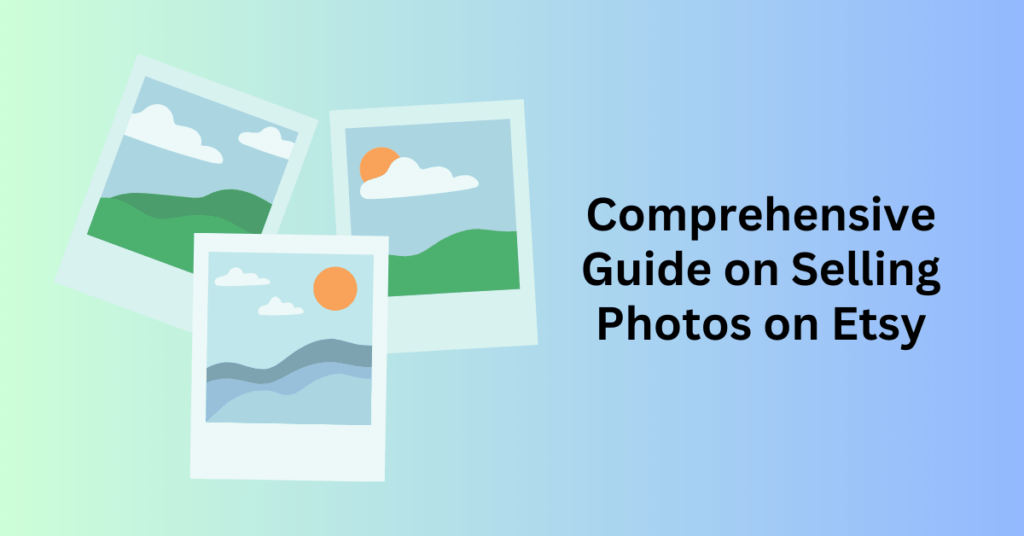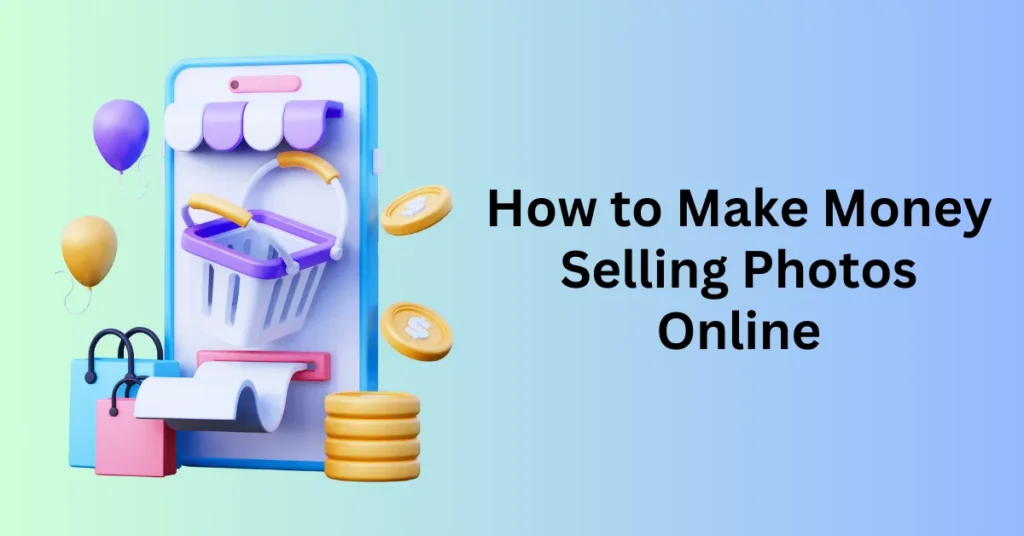Selling photos on Etsy in 2024 is both easy and profitable, whether you offer digital artwork or physical photography prints. This guide provides expert tips to help you set up your Etsy photography shop successfully. Learn how to optimize your listings and market your photos effectively to attract customers.
How to Start Selling Photos on Etsy
Selling photos on Etsy involves eight important steps that make the process straightforward and effective. To start, consider the message behind your photography and who it appeals to. This will help you turn your photography passion into merchandise that makes money.
Step 1. Do a Market Research
Firstly, you should be conducting thorough market research. This is crucial for identifying gaps in the market where your Etsy business can generate income. By understanding the landscape, you can then pinpoint opportunities where your offerings can stand out and attract customers.
One of the first steps is to identify your target audience. You need to consider who would be interested in your photos: are they nature enthusiasts, interior decorators, or digital art collectors? Then, delve into the characteristics of your target demographic to help you understand where they spend their time online and their buying habits. This knowledge is essential for tailoring your marketing efforts effectively.
Next, research your competitors. You can examine other Etsy photography shops that sell similar photos. Besides, you should also analyze their pricing strategies, presentation styles, and customer reviews. By identifying their strengths and weaknesses, you can then use this information to position your shop uniquely in the market, offer something distinct or address unmet needs that can give you a competitive edge.
Keeping up with trends and demand is also vital. Stay informed about current photography and social media trends, and monitor popular categories on Etsy. Besides, you can also use tools like Google Trends and Etsy’s search engine to provide valuable insights into what buyers are searching for. By aligning your offerings with these trends, you can increase the chances of attracting and retaining customers.
Step 2. Select Photos to Sell on Etsy
Now comes the fun part: selecting which of your stunning photos will attract potential customers. Think of it as curating a mini art gallery for a global audience. This process also involves showcasing your best work in a way that captivates and engages viewers from around the world.
Start by selecting high-quality images. Only your most exceptional shots should make the cut. You should ensure that each photo is of high resolution with excellent composition, as these factors are non-negotiable in presenting a professional and appealing portfolio.
Next, stick to a consistent theme. Offer collections that adhere to a specific theme or style, such as serene landscapes or dynamic cityscapes. Consistency in your offerings helps build your brand’s identity and makes it easier for potential customers to recognize and connect with your work. Besides, a cohesive collection can capture a larger share of a particular photography category and attract a dedicated audience.
Begin with a small collection and expand based on customer feedback and sales data. This approach allows you to manage your portfolio more effectively and test which themes or styles resonate most with your audience. In addition, by starting small and gradually growing your collection, you can make informed decisions that align with customer preferences and market demand.
Step 3. Decide Which Type Photos to Sell on Etsy
Would you like to sell digital photos, physical photos, or both in your Etsy shop? Each option comes with its unique set of advantages and disadvantages.
Digital Photos
Digital products can be listed as instant downloads or customized, made-to-order products based on customer specifications. For instant downloads, you can upload up to five digital files per listing, each with a maximum file size of 20 MB. However, be sure to price your items appropriately, as each sale incurs a $0.20 listing fee.
Pros:
- Instant Delivery: Customers receive their purchases immediately after payment.
- Unlimited Sales: Sell the same digital file multiple times without additional costs.
- Low Overhead: No need for physical prints, inventory, or shipping logistics.
Cons:
- High Competition: The market for digital photos is saturated with many sellers offering similar products.
- Lower Profit Margins: Digital files often sell for less than physical prints.
- Piracy Risk: Digital files can be easily copied and redistributed without your permission.
Considerations:
You will have to protect your digital photos by adding watermarks and including copyright disclaimers in your listings.
Physical Photos
Physical prints include a variety of wall art options such as posters, canvas wraps, and framed prints, catering to diverse customer preferences. Selling physical photos requires attention to printing, packaging, and shipping. Automated fulfillment methods like Print on Demand can simplify these processes and help reduce costs.
Pros:
- Tangible Products: Customers receive physical items that they can display or gift, adding a personal touch.
- Higher Perceived Value: Physical prints, particularly limited editions, are often seen as more valuable.
- Piracy Protection: Physical items are harder to duplicate compared to digital files.
Cons:
- Competitive Market: Many sellers offer physical prints on Etsy, increasing competition.
- Higher Operational Costs: Expenses for printing, stocking, packaging, and shipping can affect profit margins.
- Shipping Issues: Handling and resolving issues related to shipping and damaged products can be time-consuming and costly.
Considerations:
- Familiarize yourself with Etsy’s shipping policies and ensure compliance with their quality standards.
- Choose a reliable print-on-demand service to streamline inventory management, printing, and logistics.
By weighing the pros and cons of each option, you can make an informed decision on whether to sell digital photos, physical photos, or both in your Etsy shop. Each choice offers unique opportunities and challenges, so consider your resources, market competition, and customer preferences to determine the best approach for your business.
Step 4. Pick a Print-on-Demand Provider to Sell Photos on Etsy
Selling physical prints can provide more value to your customers and generate higher profits compared to digital downloads. With the right print-on-demand (POD) service, it’s incredibly easy to start selling high-quality prints on Etsy.
Benefits of Selling with Print on Demand (POD)
No Inventory Management: You can eliminate the need to stock physical products, which then reduces overhead costs and minimizes financial risk.
Automated Fulfillment: POD companies handle the entire fulfillment process. This will include printing, packaging, and shipping, saving you significant time and effort.
Wide Range of Products: POD services offer a diverse array of print and product options, enabling you to expand your Etsy shop’s offerings.
Scalability: Easily scale your business without the concerns associated with maintaining inventory, making it simpler to grow your operations.
Choosing the Right Print-on-Demand Service
When selecting a POD service for selling physical prints on Etsy, consider the following factors:
- Quality of Prints and Materials: Ensure the service provides high-quality prints and materials that meet your standards.
- Diversity of Print Options: Look for a variety of products and print options to cater to different customer preferences.
- Etsy Integration: Choose a POD service that seamlessly integrates with Etsy to streamline your workflow.
- Cost Comparison: Compare the costs of different services, including base prices, shipping fees, and any additional charges.
- Production and Shipping Times: Evaluate the turnaround times for production and shipping to ensure timely delivery to your customers.
- Seller Feedback: Research reviews and feedback from other sellers to gauge the reliability and performance of the POD service.
Getting Started with Printify
Printify is a popular POD service that allows you to sell photo prints with automated order fulfillment and zero upfront investment. Here’s how you can start selling your physical photography with Printify:
- Sign Up and Connect: Firstly, create a free Printify account and link it to your Etsy shop for seamless integration.
- Select Products: Then, browse and choose from a variety of canvases, posters, and other print options that suit your photography.
- Upload Your Photos: Next, upload your high-quality images to the Printify Product Creator, where you can customize your products.
- Create Listings: Design your product listings with detailed descriptions and attractive photos, then publish them to your Etsy shop.
- Order Fulfillment: When a customer purchases a print from your Etsy shop, Printify takes care of printing, packaging, and shipping the order directly to them.
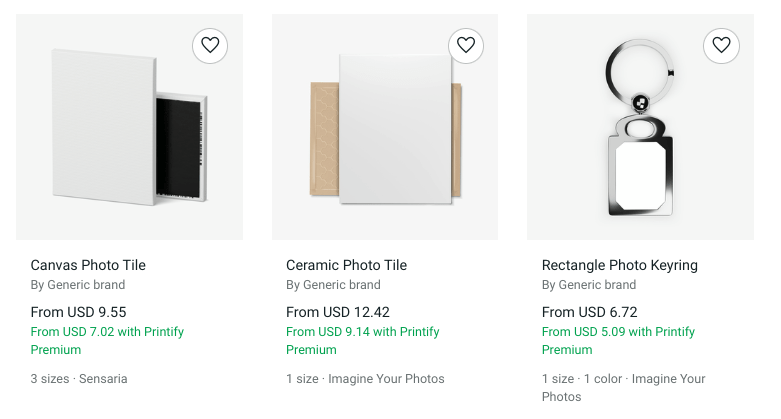
Why Choose Printify?
Printify stands out for its extensive range of over 900 high-quality products, seamless integration with Etsy, and competitive pricing, making it an excellent choice for photographers looking to maximize their earnings.
Here are a few reasons to consider Printify for your Etsy shop:
- High-Quality Products: Printify offers top-notch print products that ensure customer satisfaction.
- Seamless Integration: Easily manage your Etsy listings and orders through Printify’s intuitive platform.
- Lowest POD Prices: Benefit from the lowest prices in the POD market, enhancing your profit margins.
Besides, you can explore Printify’s offerings to find the perfect canvases and posters for your photography and start transforming your images into stunning physical prints that customers will love. By leveraging Printify’s efficient and cost-effective services, you can focus on what you do best—creating beautiful photography—while leaving the rest to the experts.
Start selling with Printify Today
Step 5. Set Up Your Etsy Shop to Sell Photos
Getting your Etsy shop up and running is an exciting milestone. Here’s a step-by-step guide to help you get started:
1. Register Your Etsy Account
Firstly, visit Etsy’s website and sign up for an account. Then, read and agree to Etsy’s policies and Terms of Use. After that, follow the onboarding instructions to officially open your Etsy shop.
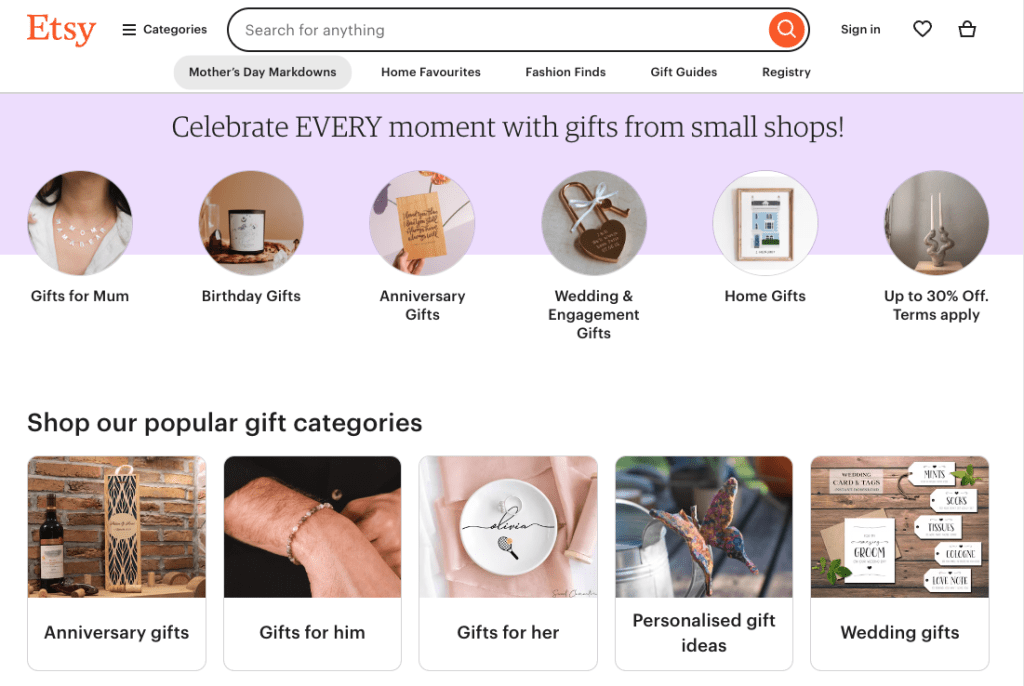
2. Adjust Shop Preferences
Choose the primary language for your shop. Then, indicate your shop’s location to help localize your listings. After that, set the currency you will use for pricing your products, ensuring they align with your target audience’s preferences.
3. Name Your Store
Select a catchy and memorable name that reflects your brand. The name should be 20 characters or less. However, if you’re stuck, try using a business name generator like Namelix for creative ideas.
4. List Your First Product
- Create a Listing: Add a compelling title and detailed description for your product.
- Choose a Category: Select the most appropriate category to help customers find your product.
- Set Shipping Options: Configure shipping details, including costs and delivery times.
- Listing Fee: Note that each product listing incurs a $0.20 fee.
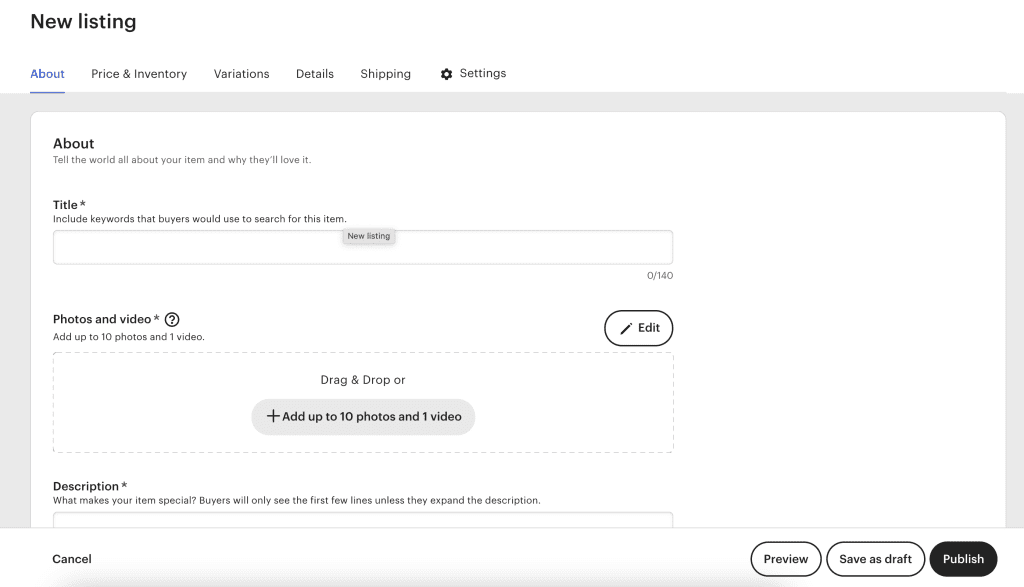
5. Adjust Payment Options, Billing, and Security
Firstly, enable Etsy Payments to offer customers multiple payment options. Then, enter your billing information for transaction fees and other charges. Finally, complete the necessary steps to verify your identity, ensuring secure transactions.
Step 6. Prepare High-Quality Listings
To start selling photos on Etsy, it’s essential to create compelling product listings that attract and engage customers. To refine your product pages:
Research Keywords
Keywords are specific words and phrases people use in search engines when looking for products. You can utilize tools like Semrush, Alura, or eRank to identify keywords that are relevant to your photography business. This research will also help you reach your target audience effectively.
Use Keywords and Tags
Incorporate keywords and tags strategically to highlight the unique selling points of your photography. You should ensure that relevant keywords are included in your titles and descriptions. Additionally, use up to 13 product tags for each listing on Etsy. These tags also help Etsy categorize your products accurately, increasing their visibility to potential customers.
Adjust Product Titles and Descriptions
Your product titles should be unique and informative without being overloaded with keywords. A well-crafted title can capture the essence of your photo and attract clicks.
Product descriptions are crucial, even though they’re initially hidden under “Learn more about this item” on the product page. Regularly update your listings to keep them relevant and in line with current trends. Besides, you can use the description to provide detailed information about your offerings, emphasizing what makes your products special. Include specifics such as format, sizes, dimensions, materials, and other pertinent details. Finally, enhance readability by using bullet points and bolded terms where appropriate.
Add Captivating Images
The images you use should highlight the unique features of your physical or digital prints. You must ensure they accurately represent the colours, dimensions, and textures of the final product. Don’t rely on a single image. You should instead provide multiple variants that clearly and creatively showcase your designs.
Invest in professional photography to present your prints in the best light. For physical prints, you can also include engaging lifestyle mockups using tools like Printify Product Creator. If you’re photographing the prints yourself, then pay attention to lighting, capture the products from various angles, and include other items for scale.
Establish Terms of Use
Clearly outline the terms of use for your items to manage customer expectations. If you want to prevent customers from reselling your digital photography, include a disclaimer in the product description, such as “Not for commercial use or resale.” This also helps set clear boundaries and ensures your customers understand how they can use your products.
By carefully crafting your product listings and paying attention to these details, you can create a compelling Etsy shop that attracts and retains customers, ultimately driving sales and growth for your photography business.
Step 7. Price Your Listings
On the other hand, setting the right price for your photography listings on Etsy can be challenging. You need a balance—pricing that attracts customers without undervaluing your art. Here are some essential factors to consider to help you sell your photography prints effectively:
Material Costs: Ensure your pricing covers the costs of printing, framing, and packaging. Besides, you should calculate these expenses accurately to avoid underpricing your products.
Time Invested: Factor in the time spent preparing each digital file or physical print. Your time is valuable, and it should also be reflected in the final price of your work.
Competitors: Research the prices set by other photographers in your target market. Understanding the competitive landscape can help you position your prices appropriately.
Etsy Fees: Account for all Etsy-related fees, including listing fees, transaction fees, and payment processing fees. These costs can add up, so make sure they are included in your pricing strategy.
Profit Margin: Ensure your pricing allows for a healthy profit after covering all expenses. A reasonable profit margin is crucial for sustaining and growing your photography business.
By taking these factors into account, you can set prices that are fair to you and attractive to your customers, ensuring the success of your Etsy shop.
Step 8. Market Your Etsy Shop
Selling photos on Etsy goes beyond simply uploading your artwork. Instead, it’s about standing out in a crowded marketplace filled with talented photographers. To ensure your online store gets the attention it deserves, follow these effective promotional strategies.
Social Media Marketing
Harness the power of social media to share your story and attract potential customers. Platforms like Instagram, Facebook, and Pinterest are perfect for showcasing your work and connecting with your audience. Here’s how to make the most of them:
- Engage with Your Audience: Share your journey as a photographer. Post behind-the-scenes content, such as your creative process, the tools you use, and the steps you take to edit your photos. This personal touch can help build a loyal following.
- Consistent Posting: Regularly update your social media accounts with new content. You should use high-quality images and engaging captions to capture the interest of potential buyers.
- Utilize Stories and Reels: Besides, Instagram Stories and Reels are great for sharing quick updates and engaging videos. Use these features to showcase time-lapse edits, photo shoot preparations, and customer testimonials.
- Join Relevant Groups and Communities: Participate in photography and art groups on Facebook and other platforms. Share your work, offer advice, and engage with other members to build your reputation and attract more visitors to your store.
Etsy Ads
Boost your store’s visibility by leveraging Etsy Ads. Etsy provides two types of ads to help promote your listings:
- Onsite Ads: These ads increase your visibility within the Etsy marketplace. Promoted listings will appear in Etsy search results, giving you an edge over competitors. You can easily set these up through your Etsy Shop Manager.
- Offsite Ads: These ads promote your listings across various external platforms like Google and social media. You’re automatically enrolled in offsite ads, and fees are only charged when you make a sale from the ad.
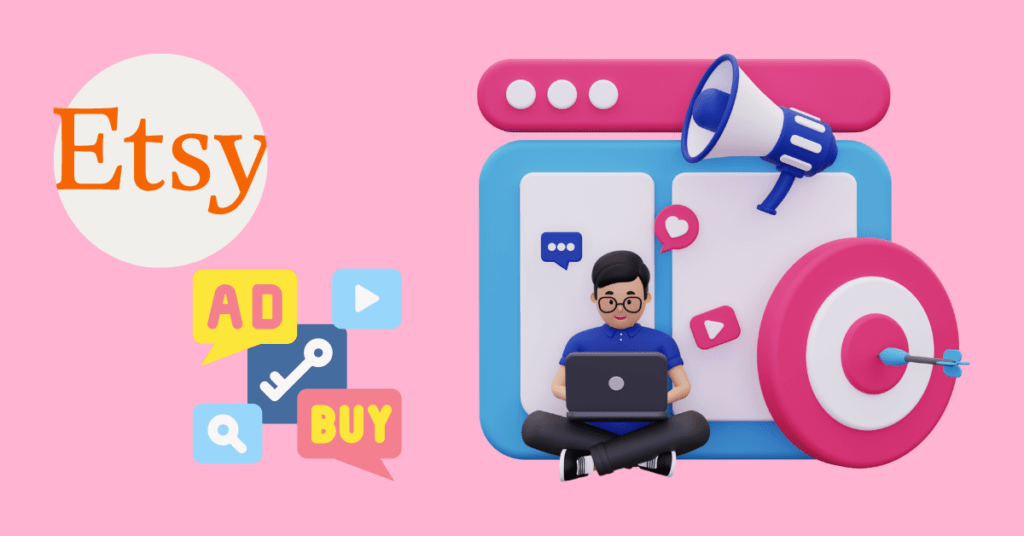
Additionally, consider using Google Ads or Microsoft Ads to reach a broader audience outside of Etsy. These platforms also allow you to target specific keywords and demographics, ensuring your ads reach potential customers who are most likely to be interested in your photos.
Other Promotional Strategies
To further enhance your store’s visibility and boost sales, try implementing the following strategies:
- Offer Free Shipping: Offering free shipping can attract more buyers and improve your search ranking on Etsy. Customers are often more inclined to purchase when they see no additional shipping costs.
- SEO Optimization: Optimize your product listings with relevant keywords. Use descriptive titles, tags, and detailed descriptions to improve your search visibility both on Etsy and search engines.
- Seasonal Promotions and Discounts: Run special promotions and discounts during holidays and peak shopping seasons. Limited-time offers can create a sense of urgency and encourage more purchases.
- Email Marketing: Build an email list of interested customers and send them regular updates, exclusive offers, and sneak peeks of new collections. Personalized emails can also help drive repeat business and keep your audience engaged.
Strategy and Tips for Selling More Photos On Etsy
Stand out among other Etsy sellers and photography shops and reach your maximum profitability faster by following these comprehensive tips.
Complete Your Etsy Account Setup
Optimize Your Shop Page
To create engaging shop branding, ensure consistency in your Etsy store by selecting cohesive colours, fonts, and themes that resonate with your target audience. This approach not only creates a memorable and professional appearance but also helps in building a strong brand identity.
Then, add information about your business. Filling out your About section allows you to share your story, your inspiration, and the reasons behind selling your photography. This personal touch can also create a deeper connection with potential buyers, making them more likely to support your shop.
Additionally, don’t forget to add images. Including a shop logo and banner that adhere to Etsy’s requirements and best practices is crucial. High-quality visuals make your shop more appealing and professional, drawing in potential customers and encouraging them to browse your products.
Furthermore, expand your product range. Diversifying your offerings by introducing new sizes, formats, and products such as greeting cards, canvases, or blankets can attract a wider audience. This variety not only caters to different customer preferences but also increases your sales opportunities.
Lastly, add relevant shop policies. Clearly outlining your policies regarding order returns, exchanges, and shipping fees is essential. Transparency builds trust and helps manage customer expectations, contributing to a positive shopping experience and repeat business.
Send Out Post-Purchase Messages
A brief thank-you message or a feedback request can significantly impact your customer’s experience:
- Thank-You Notes: Express your gratitude to buyers, making them feel appreciated and valued.
- Feedback Requests: Politely ask for reviews and address any issues that could lead to negative feedback. Positive interactions can turn one-time buyers into loyal advocates for your shop.
Consider Discounts for Bulk Purchases
Encourage larger orders and foster customer loyalty by offering discounts for purchasing multiple items or reaching a specific order threshold:
- Create Promo Codes: Go to your Etsy Shop Manager → Marketing → Sales and discounts → Create a promo code. This can incentivize customers to buy more and return for future purchases.
Collect Positive Reviews
Building a credible and reputable shop is essential for standing out on Etsy:
- Community Credibility: Address customer questions and concerns transparently. This leads to positive reviews, repeat customers and a strong reputation.
- Encourage Reviews: Engage with your customers and encourage them to leave feedback. Positive reviews serve as endorsements that can attract new buyers.
Become Your Own Customer
Evaluate your shop from a customer’s perspective to identify areas for improvement. Begin by assessing your product listings. Ensure they are clear, well-priced, and visually appealing. Using high-quality images and detailed descriptions can significantly enhance the attractiveness of your products.
Then, review the quality of your products. If you sell physical items, regularly assess their quality, functionality, and overall appeal. It’s crucial to ensure they meet or exceed customer expectations to maintain satisfaction and encourage repeat business.
Additionally, analyze the competition. Regularly review other photography shops on Etsy to understand their products, descriptions, and promotions. This analysis can help you identify trends and opportunities for differentiation, allowing your shop to stand out.
Furthermore, focus on continuous improvement. Regularly evaluate your product offerings to determine what attracts customers. Identify ways to enhance your listings and expand your range to keep your shop fresh and appealing.
Finally, by implementing these strategies, you can effectively enhance your Etsy shop’s visibility, attract more customers, and boost your profitability. Consistent effort, engagement, and a customer-centric approach are key to thriving in the competitive world of Etsy photography sales.
Final Thoughts: Comprehensive Guide on Selling Photos on Etsy
Discover how to sell photography on Etsy and transform your passion for nature, landscape, or other artistic photography into a successful Etsy shop. Learn how to improve your listings, implement effective marketing strategies, and enhance the customer experience.
This comprehensive guide provides actionable steps, from setting up your Etsy shop to optimizing listings and marketing your photos. Key steps include conducting market research, selecting high-quality images, choosing between digital and physical products, and leveraging print-on-demand services.
Utilize Print on Demand with Printify, even if you have just one photo. Apply your unique designs to various products in creative ways, and start selling your photography on Etsy today.
